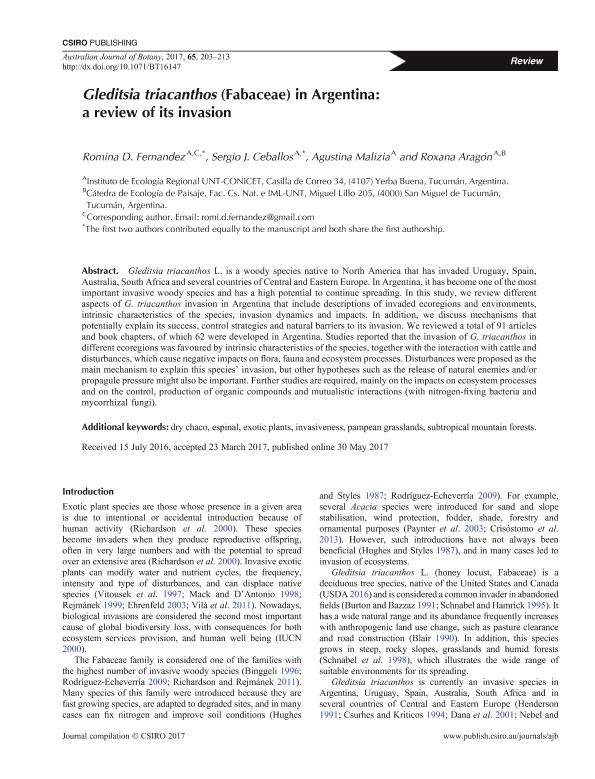Artículo
Gleditsia triacanthos (Fabaceae) in Argentina: A review of its invasion
Fecha de publicación:
06/2017
Editorial:
Csiro Publishing
Revista:
Australian Journal of Botany
ISSN:
0067-1924
e-ISSN:
1444-9862
Idioma:
Inglés
Tipo de recurso:
Artículo publicado
Clasificación temática:
Resumen
Gleditsia triacanthos L. is a woody species native to North America that has invaded Uruguay, Spain, Australia, South Africa and several countries of Central and Eastern Europe. In Argentina, it has become one of the most important invasive woody species and has a high potential to continue spreading. In this study, we review different aspects of G. triacanthos invasion in Argentina that include descriptions of invaded ecoregions and environments, intrinsic characteristics of the species, invasion dynamics and impacts. In addition, we discuss mechanisms that potentially explain its success, control strategies and natural barriers to its invasion. We reviewed a total of 91 articles and book chapters, of which 62 were developed in Argentina. Studies reported that the invasion of G. triacanthos in different ecoregions was favoured by intrinsic characteristics of the species, together with the interaction with cattle and disturbances, which cause negative impacts on flora, fauna and ecosystem processes. Disturbances were proposed as the main mechanism to explain this species' invasion, but other hypotheses such as the release of natural enemies and/or propagule pressure might also be important. Further studies are required, mainly on the impacts on ecosystem processes and on the control, production of organic compounds and mutualistic interactions (with nitrogen-fixing bacteria and mycorrhizal fungi).
Archivos asociados
Licencia
Identificadores
Colecciones
Articulos(IER)
Articulos de INSTITUTO DE ECOLOGIA REGIONAL
Articulos de INSTITUTO DE ECOLOGIA REGIONAL
Citación
Fernandez, Romina Daiana; Ceballos, Sergio Javier; Malizia, Agustina; Aragón, Myriam Roxana; Gleditsia triacanthos (Fabaceae) in Argentina: A review of its invasion; Csiro Publishing; Australian Journal of Botany; 65; 3; 6-2017; 203-213
Compartir
Altmétricas




